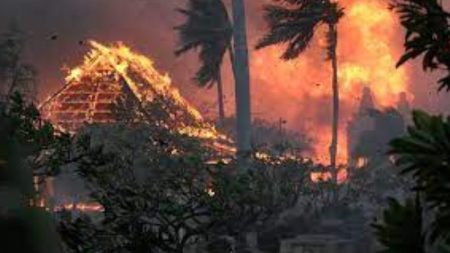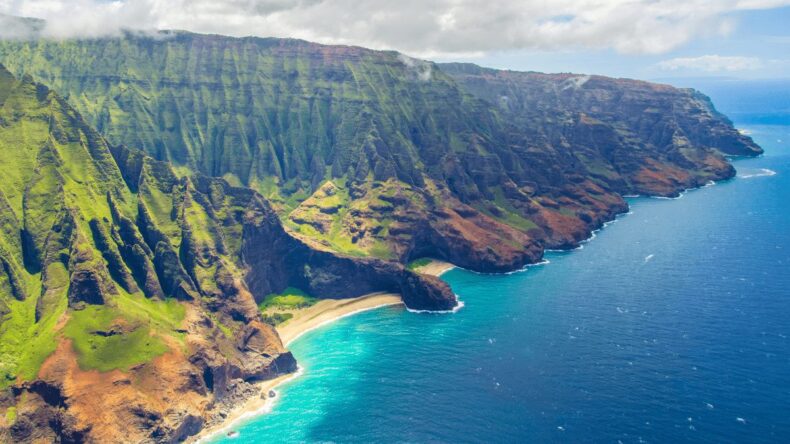The region of Maui, Hawaii has been facing the lashes of wildfires, paralyzing the natives and the environment.
The Fatal Wildfires
The island of Maui, Hawaii, is reeling from the consequences of catastrophic wildfires, with the death toll soaring to over fifty individuals, and authorities are grimly prescient that the number is bound to a further increase. In a devastating turn of events, a series of fires erupted across three of Hawaii’s islands this week, with authorities suspecting them to be among the deadliest in the state’s recorded history. It has left residents scrambling for refuge due to the unprecedented nature of the disaster.
The relentless wildfires continue to wreak havoc in Lahaina, a once-thriving locale now synonymous with devastation. The flames have consumed over one thousand seven hundred structures, exacting a ruinous toll that transcends mere numbers. With billions of dollars’ worth of property turned to ash, the financial ramifications of this disaster are staggering. As the fire rages on, it is clear that its impact goes beyond the immediate loss of life and property, extending to the very fabric of Maui’s existence.
Causes underlying the Flames
August in Hawaii characteristically marks the onset of the dry season, a period during which certain regions of the island contend with irregular to intense drought conditions. Thus, the region has found itself grappling with the consequences of this climactic phase during this month.

As the calendar flipped to August, an unmistakable shift in environmental conditions became evident. A significant expanse of Maui found itself ensnared within the clutches of what meteorological experts designate as an “abnormally dry” state of drought. This classification implies a notable deficiency in precipitation, potentially setting the stage for parched landscapes and resource strains.
However, the unfolding narrative took a more concerning turn on the 8th of August. The tranquility of this idyllic island was disrupted as a segment of Maui transitioned from the aforementioned abnormally dry status to a far more severe classification – that of a severe drought. This pivotal escalation served as a harbinger of elevated risks, casting a shadow over the region’s vulnerability to the perilous threat of wildfires.
The implications of this transformation are profound. The shift to severe drought status augments the susceptibility of the affected area to the rampant spread of wildfires. The arid conditions, compounded by the reduced availability of water resources, create a combustible combination, effectively transforming the landscape into a tinderbox awaiting a spark. As the moisture levels diminish and vegetation becomes increasingly desiccated, the potential for wildfires to ignite and rage uncontrollably escalates exponentially.
The significance of these evolving drought conditions extends beyond the confines of meteorological nuances. The escalating risk of wildfires poses a multifaceted challenge, encompassing ecological, economic, and human dimensions. The destruction of natural habitats, the potential loss of property, and the safety of residents all hinge on the interplay of climatic variables and the resultant fire hazards.
Commendable Resilience
In the face of this unprecedented catastrophe, the resilience and determination of the island’s residents and emergency responders have been nothing short of extraordinary. The scale of destruction and the enormity of the task ahead cannot be overstated. As the fires continue their devastating course, attention turns not only to the immediate response efforts but also to the larger questions surrounding disaster preparedness, climate change, and the imperative to safeguard communities in an increasingly volatile world.
The Imminent Dangers of Climate Change
The evolving drought conditions on Maui serve as a poignant reminder of the broader issue of climate change. The intensification of drought patterns, the heightened incidence of wildfires, and the increasingly erratic weather phenomena collectively underscore the urgent need for a concerted global effort to address the underlying causes of climate change. By curbing greenhouse gas emissions, promoting sustainable practices, and championing environmentally conscious policies, it is possible to mitigate the exacerbation of such climatic events. The nature and repercussions of Maui’s evolving drought conditions is emblematic of the delicate equilibrium that defines our relationship with the environment. It is a vivid reminder of the delicate balance that sustains life on this planet and a call to action for humanity to act responsibly.













